If you’re looking to bring some positive energy and symbolism to your space, a Feng Shui bamboo plant is an excellent addition. However, taking care of this symbolic plant can be quite a task if you’re unaware of its needs. In this section, we’ll guide you through the art of maintaining a Feng Shui bamboo plant and provide you with valuable tips on how to take care of your bamboo plant to ensure its health and longevity.
Before we dive into the care tips, it’s essential to understand that taking care of a Feng Shui bamboo plant requires attention to its unique requirements. Not only does it require the right amount of sunlight and water, but it also needs a specific environment and nutrient-rich soil to thrive.
Key Takeaways:
- Proper care is crucial for the health and longevity of a Feng Shui bamboo plant
- Bamboo plants require a specific environment, the right amount of water, sunlight, and nutrient-rich soil to thrive.
- Providing the ideal environment for your bamboo plant is key for its well-being.
- Fertilizing, pruning, and trimming your bamboo plant are essential tasks to ensure its growth and maintain its beauty.
- Pests and diseases can affect your bamboo plant, but with proper care, you can prevent and treat them effectively.
Choosing the Right Bamboo Plant for Feng Shui
Not all bamboo plants are created equal when it comes to Feng Shui. To ensure the positive energy flow in your space, it’s essential to choose the right type of bamboo plant. Let’s explore the different types of bamboo plants suitable for Feng Shui:
| Bamboo Plant | Description |
|---|---|
| Lucky Bamboo | This plant is hardy and easy to care for, making it a popular choice for Feng Shui. It symbolizes good fortune and luck. |
| Black Bamboo | This plant is excellent for protection and warding off negative energy. It represents resilience and strength. |
| Giant Timber Bamboo | This plant is ideal for enhancing creativity and spiritual growth. It represents longevity and endurance. |
When selecting a bamboo plant for Feng Shui, consider the size and shape of the plant, as well as its symbolism. Keep in mind that the plant’s placement in your space is just as essential as the plant itself.
To grow and nurture your Feng Shui bamboo plant, ensure it receives ample sunlight and is placed in a clean environment. Avoid placing the plant in areas with negative energy or clutter.
With the right type of bamboo plant and the appropriate care, your plant can thrive and bring positive energy to your space.
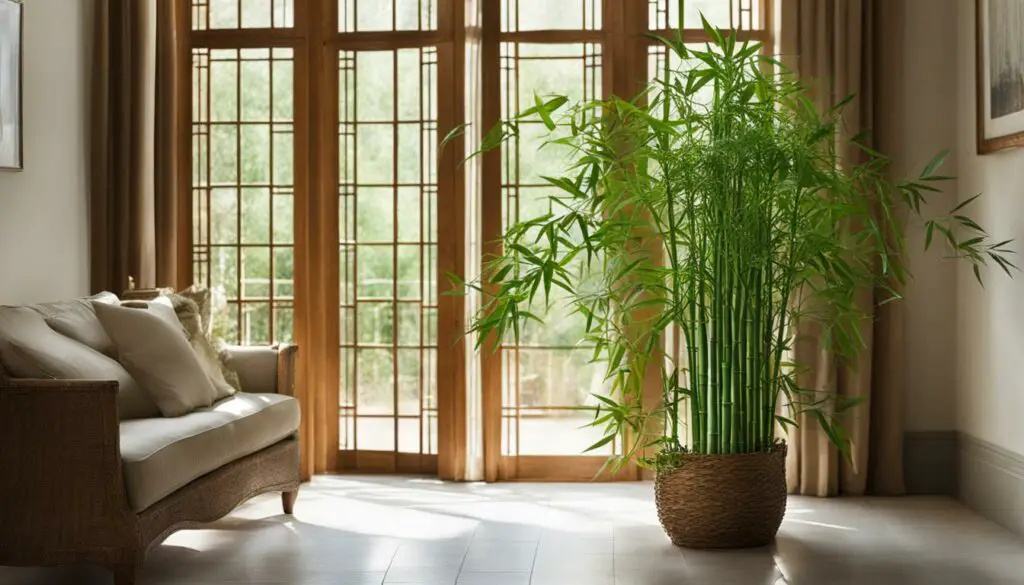
Providing the Ideal Environment for Your Bamboo Plant
Creating the perfect environment for your Feng Shui bamboo plant is essential for its health and growth. Here are some tips for optimizing the space for your bamboo plant:
- Temperature: Bamboo plants prefer a warm and humid environment. It is best to keep your plant in a room with a temperature between 60-75°F (15-24°C).
- Humidity: Since bamboo plants are native to tropical environments, they require high humidity levels. If the air in your home is dry, it may be necessary to use a humidifier to create the right level of humidity. Alternatively, placing a tray of water near the plant can also help to increase the humidity level.
- Light: While bamboo plants prefer bright, indirect light, direct sunlight can damage the leaves. It is best to place your plant near a window that filters light through a sheer curtain or blinds.
- Soil: Bamboo plants prefer well-draining soil with plenty of organic matter. Choose a potting mix made specifically for bamboo plants or create a mix with peat moss and perlite.
- Container: Make sure to choose a container with adequate drainage holes to prevent water from accumulating at the bottom.
By following these guidelines, you can ensure that your Feng Shui bamboo plant has the ideal environment to thrive and bring positive energy to your space.
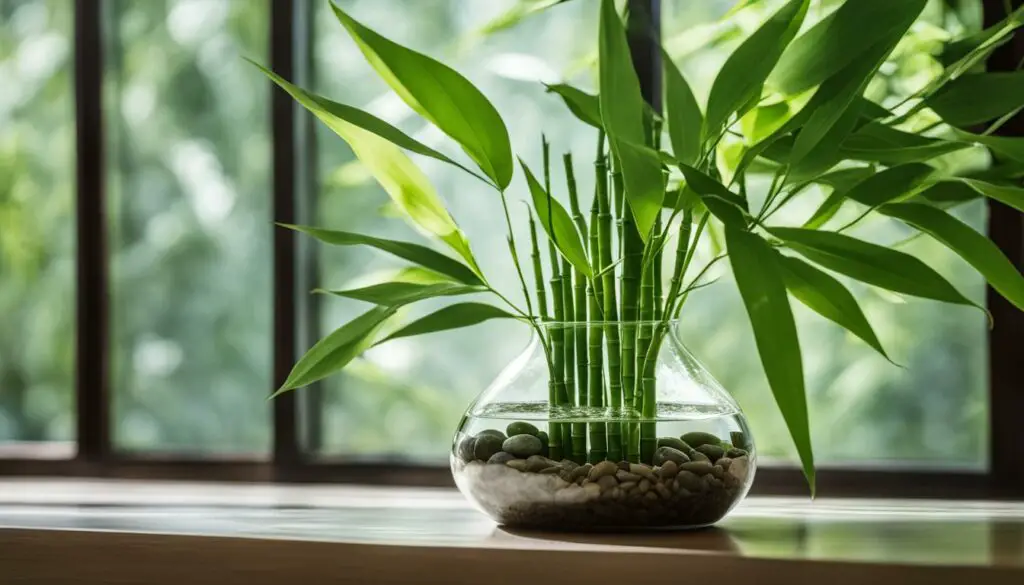
Watering and Moisture Levels for Healthy Bamboo Plant
Proper watering and maintenance of moisture levels are essential for the health of your Feng Shui bamboo plant.
The first step in ensuring the proper watering of your bamboo plant is to choose the right container. A container that is too small will require frequent watering, while a too-large container can result in waterlogged soil leading to root rot.
It is best to use distilled or purified water, as tap water can contain high levels of chlorine and fluoride, which can harm the plant. Fill the container until the water level reaches about an inch below the top of the stones or soil.
It is important to keep the water level consistent, so check it every couple of days and add water as needed.
While bamboo plants require a significant amount of moisture, they do not like to be waterlogged. Make sure that the container has good drainage and avoid letting the plant sit in standing water.
Moisture Levels for Different Bamboo Plants:
| Bamboo Species | Ideal Moisture Level |
|---|---|
| Lucky bamboo (Dracaena sanderiana) | consistently moist |
| Clumping bamboo (Bambusa spp.) | slightly moist |
| Running bamboo (Phyllostachys spp.) | moderately moist |
If the bamboo plant leaves begin to turn yellow or the stems start to droop, it may be a sign of overwatering or underwatering. Adjust the watering schedule and the amount of water accordingly.
Overall, properly watering and maintaining moisture levels are crucial for the health and longevity of your Feng Shui bamboo plant. With these simple tips and guidelines, you can nurture your bamboo plant and enjoy its beauty for years to come.

Sunlight Requirements for Thriving Bamboo Plant
Sunlight is crucial for the growth and development of your Feng Shui bamboo plant. When choosing the location for your bamboo plant, it is essential to consider the amount of sunlight it will receive.
Generally, bamboo plants require indirect or filtered sunlight. Direct sunlight can scorch the leaves and damage the plant. Therefore, it is best to place your bamboo plant near a window that receives bright but indirect sunlight.
If your bamboo plant is not receiving sufficient sunlight, you may notice slow growth, yellow leaves, or brown and crispy edges. In this case, you can use artificial lighting to supplement the plant’s light requirements. Place the light source 6-12 inches away from the plant and use it for at least 6-8 hours a day.
Tips for Positioning Your Bamboo Plant
Here are some additional tips for positioning your bamboo plant in the ideal location for its sunlight requirements:
| Location | Sunlight Requirement |
|---|---|
| East-facing window | Indirect morning sunlight |
| West-facing window | Indirect afternoon sunlight |
| North-facing window | Filtered sunlight |
| South-facing window | Filtered sunlight or partial shade |
By following these tips, you can ensure that your Feng Shui bamboo plant receives the optimal amount of sunlight, promoting its growth, and maintaining its health for years to come.
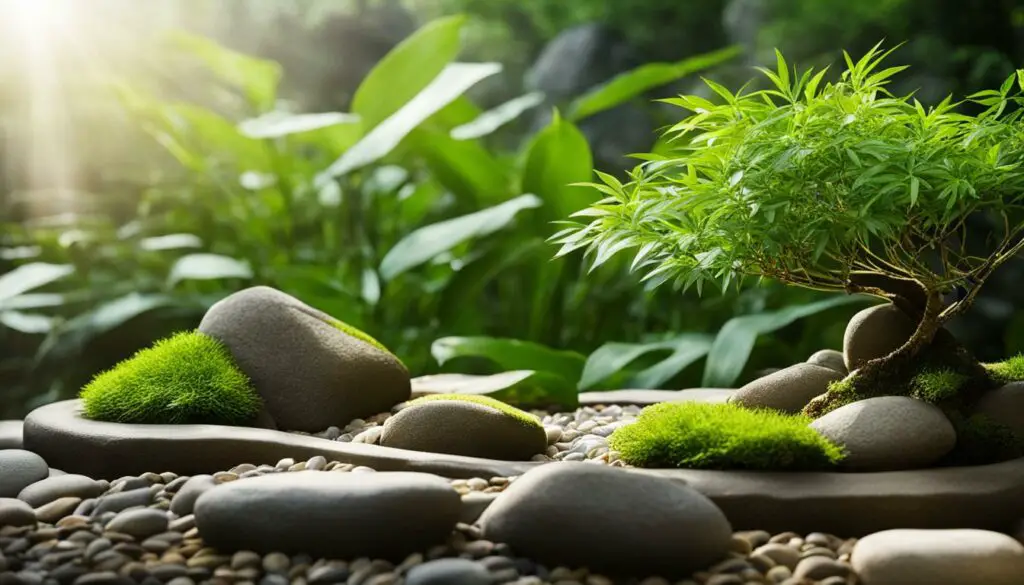
Fertilizing and Nutrient Needs of Bamboo Plants
Fertilizing your bamboo plant is essential for its growth and overall health. It provides the necessary nutrients for the plant to thrive in its environment.
When choosing a fertilizer, it is important to select one that is specifically designed for bamboo plants. A balanced fertilizer with equal amounts of nitrogen, phosphorus, and potassium is ideal for promoting healthy growth.
| Fertilizer Type | Application | Frequency |
|---|---|---|
| Liquid Fertilizer | Dilute the fertilizer as instructed and apply it to the soil | Every two weeks during the growing season |
| Slow-release Fertilizer | Sprinkle the fertilizer on top of the soil and water it in | Once every three months |
Overfertilizing can harm your bamboo plant, so it is essential to follow the instructions on the packaging and not exceed the recommended amount.
In addition to fertilization, bamboo plants require micronutrients such as iron, magnesium, and zinc. If your plant shows signs of nutrient deficiency, such as yellowing leaves or stunted growth, consider applying a micronutrient supplement to the soil.
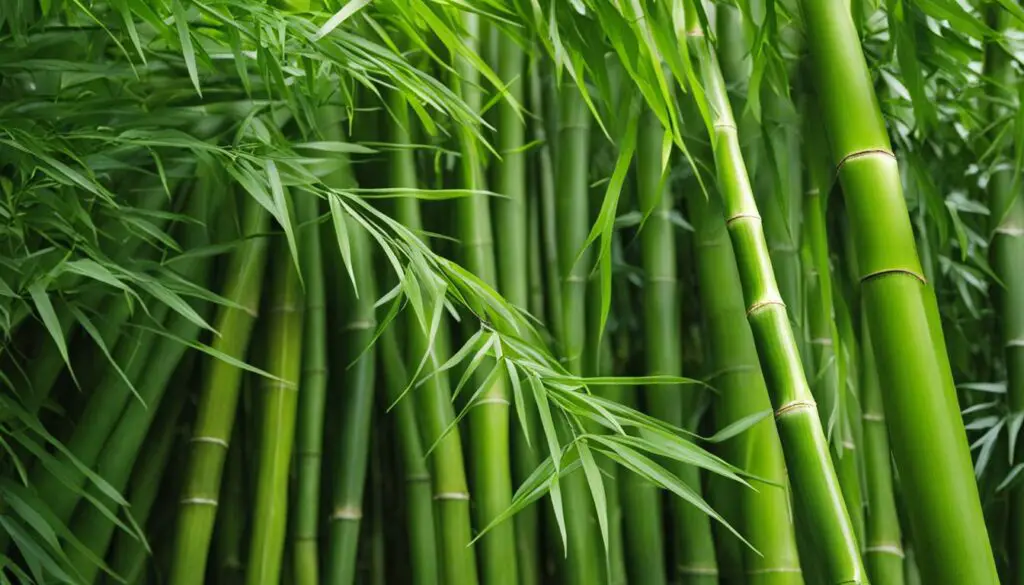
Conclusion
Providing your bamboo plant with the right nutrients is essential for its growth and longevity. Follow the recommended fertilization guidelines and consider supplementing with micronutrients to ensure your plant stays healthy.
Pruning and Trimming Techniques for Shapely Bamboo Plant
If you want your Feng Shui bamboo plant to maintain its beauty and shape, pruning and trimming are necessary. Pruning is the process of removing dead, damaged, or diseased parts of the bamboo plant, while trimming involves reducing the height or width of the plant to a suitable size.
Regular pruning and trimming will promote healthy growth and keep your bamboo plant looking its best.
Pruning Techniques
Before pruning your bamboo plant, assess its overall health and identify any dead or damaged parts. Using a sharp and sterile pruning shear, cut these parts off at the base where they connect to the main stem.
For thin and spindly stems, cut them off just above a node where new growth can emerge. This will encourage thicker and more vigorous growth.
Trimming Techniques
Trimming your bamboo plant can be tricky, as cutting off too much can damage the plant and affect its growth. To maintain the plant’s natural shape, cut the top part of the tallest stem to the desired height.
If you want to reduce the overall width of the plant, cut the stems at different heights to create a layered effect. This will give the plant a more natural and organic appearance.
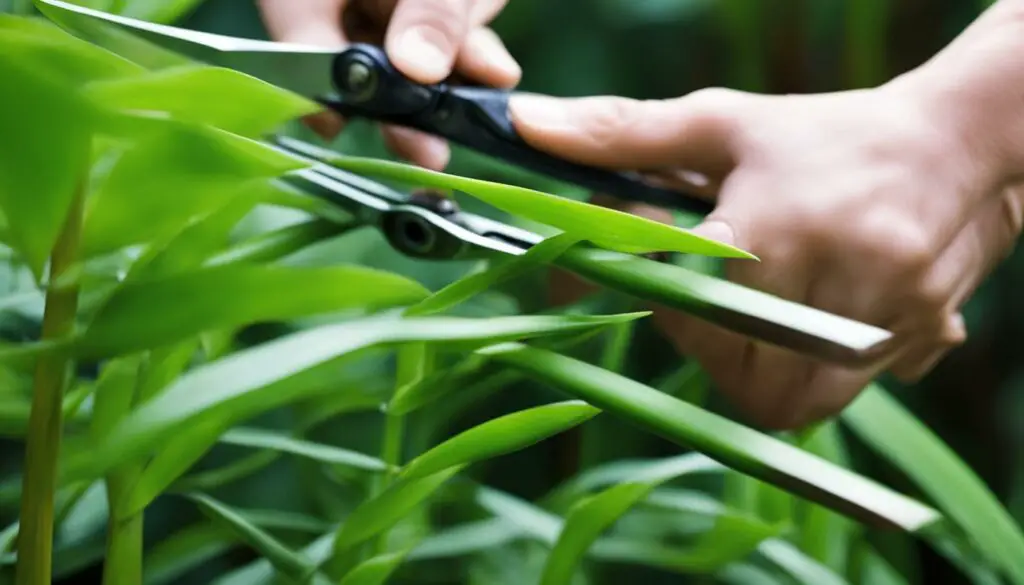
“Pruning and trimming your bamboo plant not only enhances its shape and appearance but also promotes healthy growth.”
Remember to water your bamboo plant after pruning and trimming to help it recover from the stress. Avoid pruning or trimming during the winter season, as it can cause damage to the plant.
By following these simple pruning and trimming techniques, you can ensure your Feng Shui bamboo plant stays healthy and shapely for years to come.
Common Pests and Diseases to Watch Out For
Maintaining a healthy Feng Shui bamboo plant requires diligence in monitoring and preventing common pests and diseases that can affect its growth and vitality. Here are some of the most common pests and diseases to be on the lookout for:
| Pests | Symptoms | Treatment |
|---|---|---|
| Spider Mites | Tiny webs on leaves and yellowish spots | Spray leaves with water and insecticidal soap |
| Mealybugs | White cotton-like clusters on leaves and stems | Wipe off with a cotton swab dipped in rubbing alcohol |
| Aphids | Yellow leaves and sticky residue on plant | Use insecticidal soap or neem oil and spray leaves |
| Scale Insects | Brown or yellow bumps on leaves and stems | Use rubbing alcohol and cotton swab to wipe them off |
Regularly inspecting your bamboo plant for signs of pests and taking prompt action can prevent infestations from worsening.
Additionally, diseases such as root rot and yellowing leaves can indicate overwatering or inadequate drainage. To prevent these conditions, ensure that the soil is well-draining and water only when the top 1-2 inches of soil is dry.

Remember that prevention is key to maintaining a healthy and vibrant Feng Shui bamboo plant. Regularly inspecting and caring for your plant can help prevent common pests and diseases from affecting your plant’s well-being.
Conclusion
Taking care of your Feng Shui bamboo plant can be a fulfilling and rewarding experience. By providing the right environment, watering, fertilizing, and pruning, you can ensure that your plant thrives.
It is essential to note that not all bamboo plants are suitable for Feng Shui. Therefore, it is crucial to choose the right type of bamboo for your space.
Your bamboo plant’s location is also vital to its health and well-being. Ensure that it receives enough sunlight and is not exposed to extreme temperatures or drafts.
Preventing Pests and Diseases
Proper care also involves preventing pests and diseases from attacking your bamboo plant. Keep an eye out for signs of pests and treat them immediately to prevent further spread.
In summary, taking care of your Feng Shui bamboo plant requires attention and dedication. With these tips and guidelines, you can ensure that your plant remains healthy and brings positive energy to your space.
FAQ
How often should I water my Feng Shui bamboo plant?
It is recommended to water your bamboo plant every 7-10 days. Be sure to check the soil moisture before watering and avoid overwatering, as it can lead to root rot.
Does my bamboo plant need direct sunlight?
Bamboo plants thrive in bright but indirect sunlight. Place your plant near a window where it can receive filtered or indirect light throughout the day.
How often should I fertilize my bamboo plant?
Fertilize your bamboo plant every 2-3 months during the growing season (spring and summer). Use a balanced liquid fertilizer specifically formulated for bamboo plants.
Should I prune my bamboo plant?
Yes, pruning your bamboo plant is important to maintain its shape and promote healthy growth. Trim any yellow or dead leaves and remove any overgrown or tangled stems to encourage new growth.
What should I do if my bamboo plant gets infested with pests?
If you notice pests on your bamboo plant, such as spider mites or scale insects, gently wipe them off using a soft cloth soaked in a mild insecticidal soap solution. Repeat the process as needed until the pests are gone.
Can I keep my bamboo plant in a small container?
While it is possible to keep a bamboo plant in a small container, it is best to provide enough space for its roots to grow. Transplant your bamboo plant to a larger container every 1-2 years to ensure its health and vitality.
How long can a Feng Shui bamboo plant live?
With proper care, a Feng Shui bamboo plant can live for several years. Some bamboo species can even live up to a century. Regular maintenance and ensuring the plant’s needs are met will contribute to its longevity.

